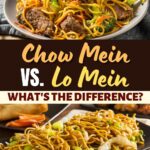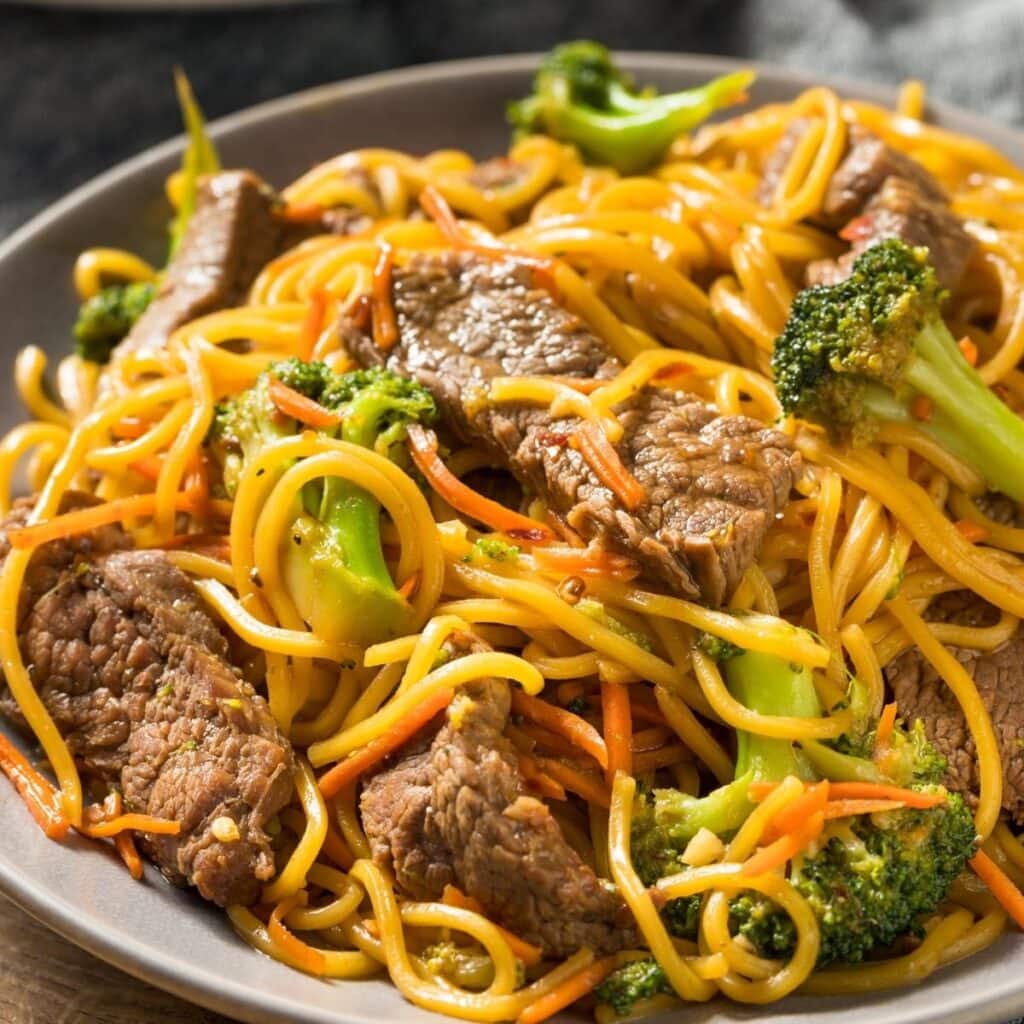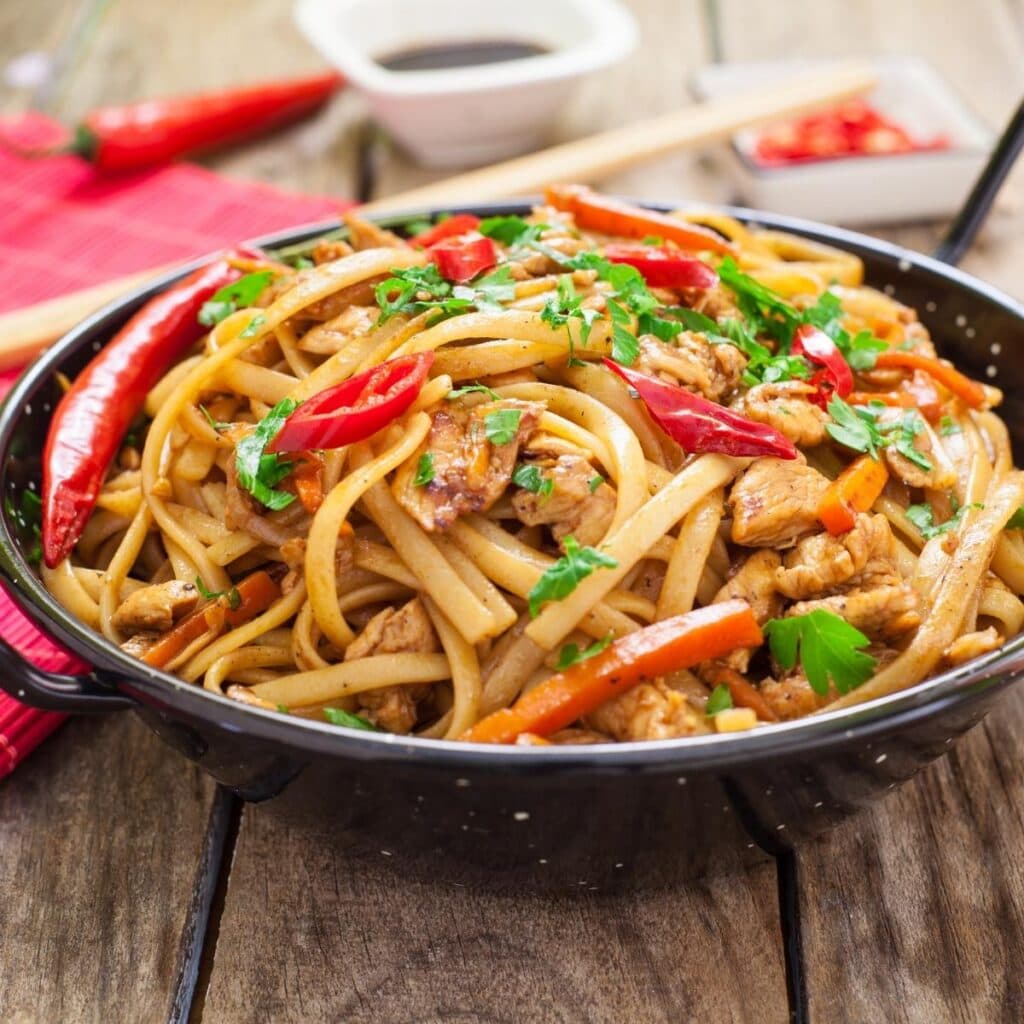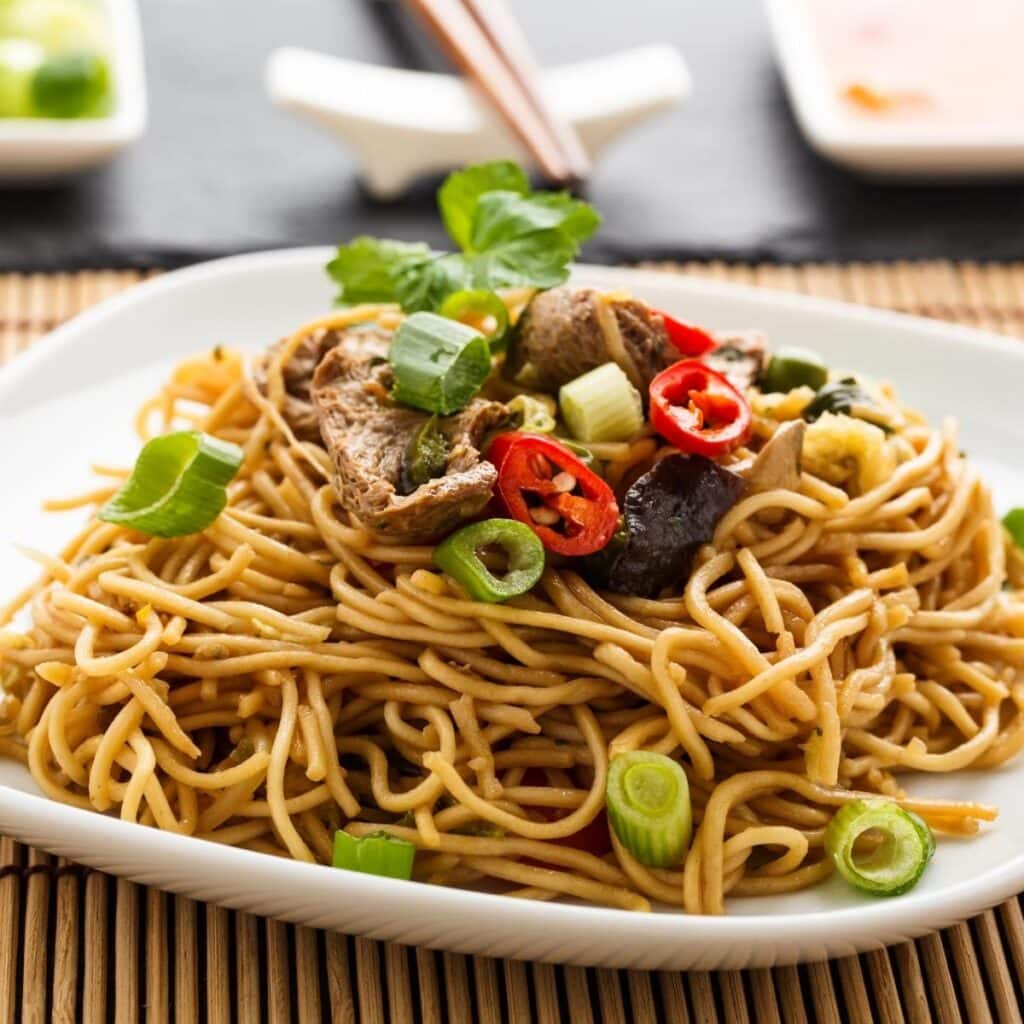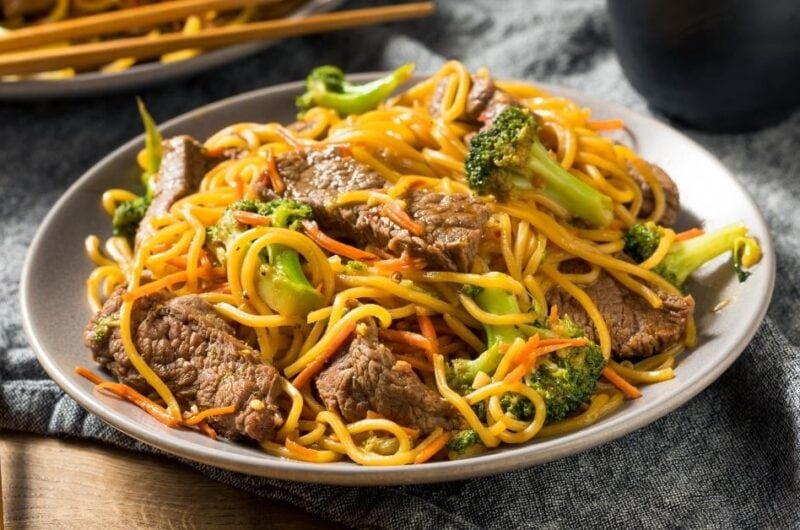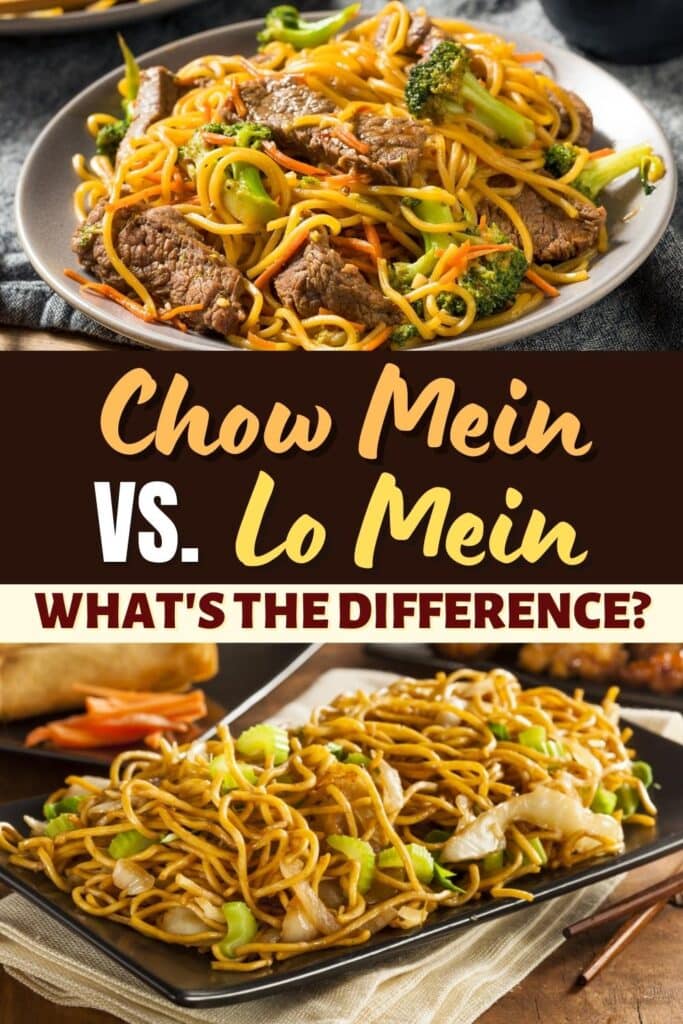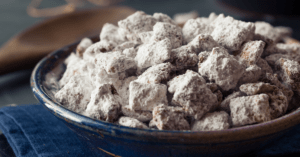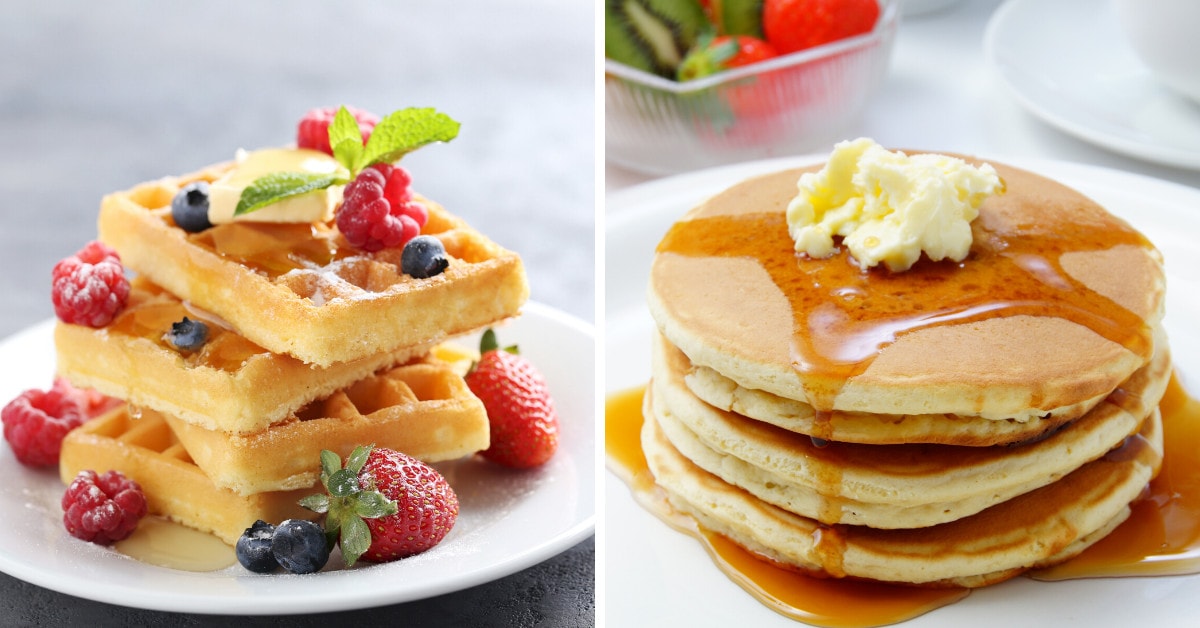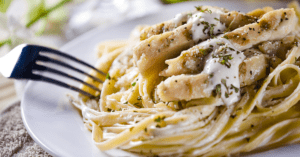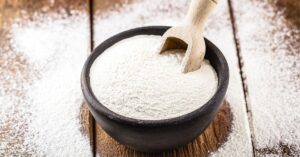Both traditional dishes are delicious, but there are some key disparities between them. So you love Chinese food. You eat orange chicken, beef broccoli, and other classic Chinese dishes almost every week. But the question is, would you consider yourself an expert in the noodle department? Low mein and chow mein are both very popular menu items in any Chinese restaurant. In fact, there are some restaurants that offer them exclusively! These starchy noodles were introduced to America by Cantonese immigrants back in the day. They’ve since become a staple comfort food in the country. But let’s set the record straight: while very similar and often used interchangeably, these noodles aren’t the same. Today, learn the differences between the two, as well as how to make them. Let’s dive right in.
What is Chow Mein?
The term chow mein means “fried noodles.” In general, it’s an egg noodle stir-fry tossed with a bit of meat, seafood, vegetables, eggs, and sauce. There are two primary types of chow mein: crispy and steamed. Both use the same ingredients but differ in the method by which the noodles are cooked. Crispy Chow Mein – Here, the noodles are fried separately and are pressed flat to make a crispy pancake-like dish. The noodles are topped with the rest of the ingredients post-cooking so that the noodles remain crispy. Steamed Chow Mein – The noodles are par-boiled first and then stir-fried with the rest of the ingredients. Compared to crispy chow mein, steamed chow mein is oilier. For both types of chow mein, the noodles are the star of the dish. That said, only a little bit of protein, vegetables, and sauce are added to highlight the noodles and keep them crispy and chewy.
What is Lo Mein?
Lo mein means “tossed/mixed noodles” in Chinese. Similar to chow mein, it’s also an egg-noodle stir-fry tossed with vegetables, protein, and sauce. Lo mein noodles are smooth, soft, and chewy. They’re already pre-cooked, so they only need to be added towards the end of cooking. The main feature of the dish, though, isn’t the noodles, but the sauce. It’s made mainly with soy sauce, oyster sauce, sesame oil, sugar, garlic, and sometimes ketchup. It has a wonderful combination of sweet and savory flavors. The noodles are generously doused in the thick sauce to give them flavor.
How to Make Chow Mein?
Forget takeout, make chow mein noodles at home instead! It’s a lot easier to make than you think. Chow mein noodles aren’t only delicious, but they’re also incredibly versatile. Feel free to add your choice of proteins and vegetables to the stir-fry.
Ingredients:
Egg Noodles – For crispy chow mein, use dried egg noodles. For steamed chow mein, you can either use fresh or dried. Vegetables – Because the noodles are so crunchy and the sauce wonderfully sweet, you can sneak in as many vegetables as you like with the kids paying no mind. Common vegetables used in chow mein include shredded cabbage, bean sprouts, and carrots. Protein – Chicken is the most popular choice because it complements the taste of the sauce. But, beef, pork, tofu, shrimp, eggs, and any other kind of protein works, too. You can opt for just one type of protein or use as many as you wish. Sauce – A sweet and savory combination of soy sauce, oyster sauce, sesame oil, broth, and sugar, thickened with cornstarch.
Directions:
- Prep the vegetables. Rinse, dry, and chop into strips.
- Boil the egg noodles according to package instructions.
- Meanwhile, combine all the sauce ingredients in a saucepan over low heat. Add the cornstarch and mix thoroughly until the sauce thickens, about 5-10 minutes.
- Preheat a large wok or skillet over medium heat. Cook the protein in oil until cooked through. Stir in the vegetables.
- Add the cooked noodles and toss them together with the rest of the ingredients. Add the sauce and carefully mix until it’s completely coated, about 1 minute. Serve and enjoy!
How to Make Lo Mein?
Lo mein has the same components as chow mein: egg noodles, proteins, vegetables, and sauce. The difference lies in the manner the dish is cooked. Here’s how.
Ingredients:
Egg Noodles – Stick to fresh egg noodles for the best-tasting lo mein. Vegetables – Just like chow mein, you can use whatever vegetables you like. Popular choices include bell peppers, broccoli, carrots, and zucchini. Protein – Chicken, beef, pork, shrimp, turkey, tofu, any kind of protein works. Sauce – A mix of sesame oil, light and dark soy sauce, oyster sauce, ginger, garlic, and sugar.
Directions:
- Boil and drain the egg noodles according to package instructions.
- Make the lo mein sauce. Whisk the ingredients until well-combined.
- Preheat a large wok or skillet over medium heat. Stir-fry the chopped vegetables and protein just until the vegetables are cooked on the outside. Add a bit of sauce to give them flavor.
- Add the noodles and the rest of the sauce. Gently toss the ingredients together. Serve and enjoy!
Chow Mein vs. Lo Mein: Which is Better?
There’s really no one better dish. To me, they’re equally delicious! It all depends on your personal taste. Crispy chow mein is crispy, steamed chow mean is chewy, and both have very little sauce in them. Lo mein, on the other hand, has softer noodles that are heavily coated with sauce.
Difference Between Chow Mein and Lo Mein
To sum up, here are the key similarities and differences between the two.
- Both are noodle stir-fries. They’re tossed with proteins, vegetables, and a sweet and savory sauce.
- Both use egg noodles.
- Chow mein is Cantonese for stir-fried noodles, while lo mein means mixed or tossed noodles.
- The egg noodles in chow mein are typically fried and coated with very little sauce. The star of the dish is the crispy noodles. Lo mein uses pre-boiled egg noodles which are then stir-fried with tons of sauce. The sauce is the main attraction of this dish.
- Because of the difference in the method of cooking, chow mein has crispy and crunchy noodles while lo mein has soft noodles that soak up the sauce well.
- Lo mein has more calories than chow mein because of all the sauce. Click on a star to rate it!
Average rating 5 / 5. Vote count: 1 No votes so far! Be the first to rate this post.
Share on social media: Let us improve this post!
